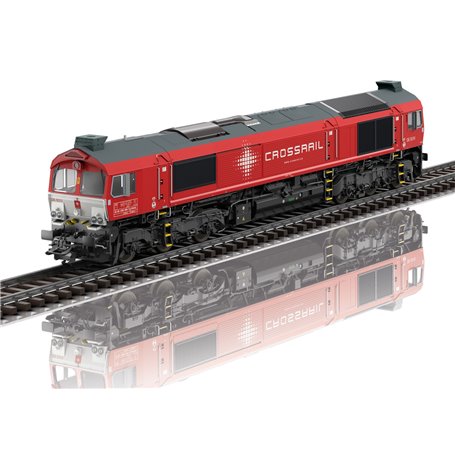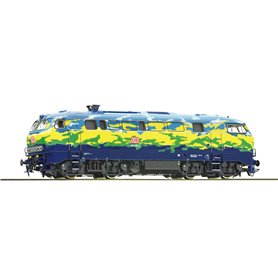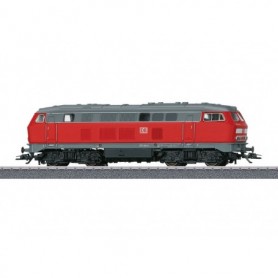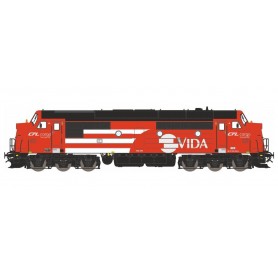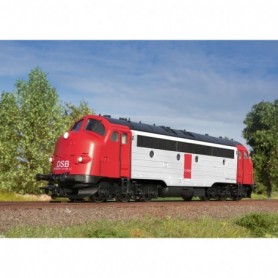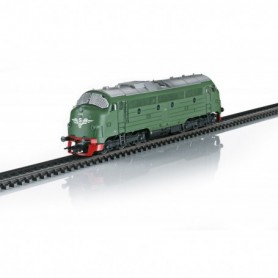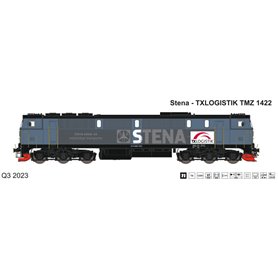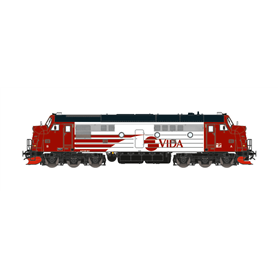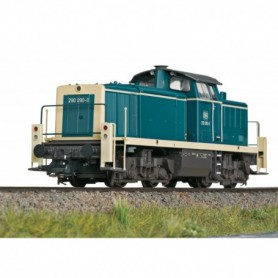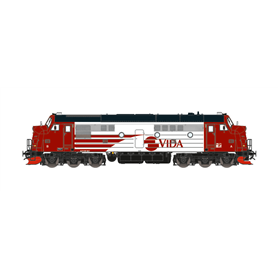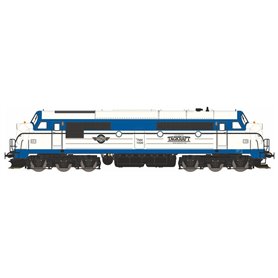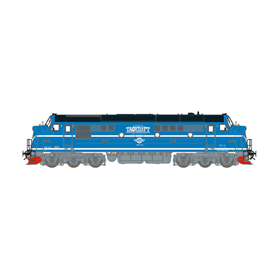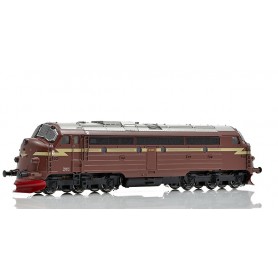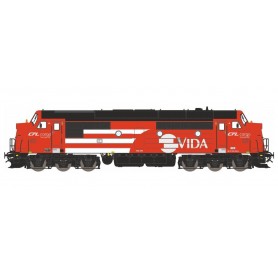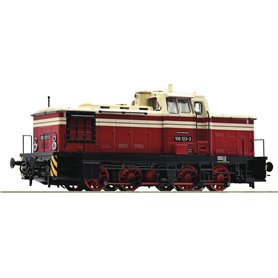Diesellok klass 77 JT4CWRM "Crossrail"
-
 Betala säkert i vår webshop!
Betala säkert i vår webshop!
Diesellok klass 77 JT4CWRM 'Crossrail'
Class 77 Diesel Locomotive
Model: The locomotive has a digital decoder and extensive sound and light functions. It also has controlled high-efficiency propulsion with a flywheel, centrally mounted. 4 axles powered using cardan shafts. Traction tires. The triple headlights and dual red marker lights change over with the direction of travel, will work in conventional operation, and can be controlled digitally. The headlights at Locomotive End 2 and 1 can be turned off separately in digital operation. When the headlights are off at both ends, the 'Double 'A' Light' function is on. The cab lighting can be controlled digitally. The control desk lighting can be controlled digitally. Other light functions such as special switching signs, and emergency stoplights can be controlled digitally. Maintenance-free, warm white and red LEDs are used for the lighting. The locomotive has a factory-installed smoke generator with dynamic smoke exhaust. It also has many separately applied details. The locomotive has detailed buffer beams. Brake hoses that can be installed on the locomotive are included. End skirting is included that can also be installed on the buffer beam. Length over the buffers approximately 24.7 cm / 9-3/4'.
Prototype: Type JT42CWRM diesel electric freight locomotive, better known as Class 77. Crossrail, Inc. diesel locomotive. The locomotive looks as it did in 2012.
Tighter EU exhaust gas regulations starting on January 1, 2009 forced the American builder Electro-Motive Division (EMD) starting in 2005, to overhaul fundamentally the Class 66 (EMD JT42CWR) built for the European market. The history of this class began in 1985, when EMD (at that time a 100% subsidiary of General Motors) built an affordable diesel locomotive for the British market. Out of this came a six-axle, diesel-electric unit, the type EMD JT26CW-SS in an angular design and with a 2,460 kilowatt / 3,299 horsepower diesel motor, the GM 16-645E3C. The locomotive was designated as the Class 59. EMD used as a basis the American diesel locomotive, type SD40-2, built in large quantities due to its proven, simple construction, which had turned out very reliable. Initially for British railroads, EMD then overhauled and improved the Class 59 in the mid-Nineties as externally largely unchanged locomotives with a 2,350 kilowatt / 3,151 horsepower GM-Motor 12N-710G3B-EC as the Class 66 (type JT42CWR), which initially went into operation starting in 1998 at the British company EVU. Its diesel motor powered a three-phase generator, type M AR8/CA6, which provided electrical energy to the six series-wound commutator traction motors installed in the trucks and geared to the wheelsets using an axle-hung gearbox. The locomotive engineer sat on the left side instead of the right because the locomotives were planned only for use in Great Britain.By the end of 2005, the lower emissions variant emerged due to tighter EU exhaust gas regulations as type JT42CWRM (in Great Britain: JT42CWR-T1) with an improved and overall reliable 2,420 kilowatt / 3,299 horsepower diesel motor, type 12-710G3B-T2, for fuel efficiency. On several railroads, it was no longer rostered as the Class 66 but as the Class 77. These improved locomotives were given better sound insulation in the cab, improvements to safety and comfort for the engineer as well as optional air conditioning. Additional external accessories were now two-part cab side windows, larger vent louvers, as well as a third door on one side due to partial removal of the continuous side corridor in the locomotive body. Increased safety, improved adhesion, and a longer maintenance interval were achieved with the 'EMD HTCR-E' radial truck. In addition, there was the 'EM2000TM' microprocessor control system for load control, motor control, and adhesion control, whereby a diagnosis system and the memory storage of past runs was implemented at the same time.A total of 244 units were delivered of the improved variant JT42CWR(M/-T1) by the end of production in 2016. Many of these units belong to leasing firms such as the Porterbrook Leasing Company (5 units), Eversholt Rail (26 units), Beacon Rail Leasing (40 units), Macquarie European Rail (24 units), or Alpha Trains (7 units), which leased the locomotives to third parties in numerous European countries. There is thus a variety of paint schemes and lettering and they change constantly. Forty-one units went in 2009 to the roster of the Egyptian National Railways (ENR) and in 2011/12, six units enriched the Societé d´Exploitation Transgabonais (SETRAG) for service in Gabon in Africa. The Euro Cargo Rail (ECR), part of the DB group, acquired the most units currently with 60 JT42CWRM locomotives. They currently run for the most part as the class 247 for DB Cargo in Germany. Privately held EVU belongs to the owners of these locomotives such as the Belgian Crossrail (8 units), the French Akiem (10 units), and the British GB Railfreight (17 units).
This model can be found in an AC version in the Märklin H0 assortment under item number 39065.
New tooling.Cab lighting can be controlled digitally.Control desk lighting can be controlled digitally.Factory-installed smoke generator with dynamic smoke exhaust.
- Skala
- 1:87
- Land
- PRIVAT
- Epok
- VI
- Spänning
- DC
- Option
- Digital Ljud

